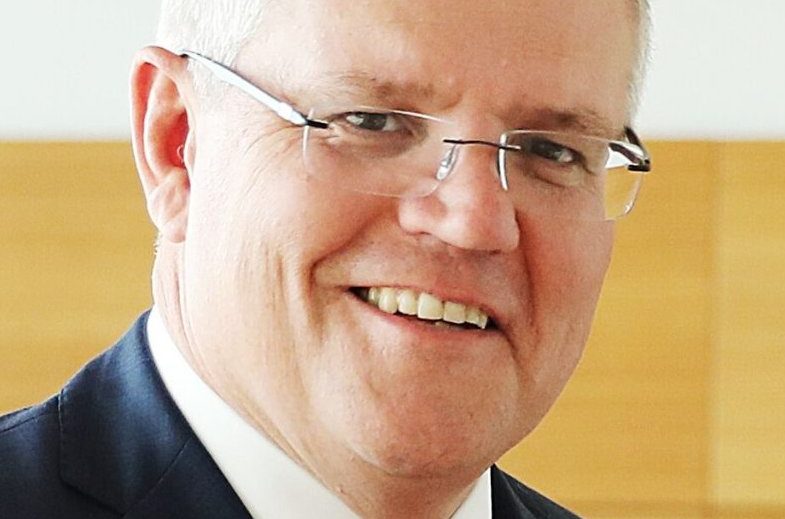From pv magazine Australia.
With governments around the world and the EU rolling out the fiscal stimulus big guns in the face of widely predicted, Covid-19-related economic turmoil, Canberra’s economic response to the coronavirus policy package is a $17.6 billion (US$10.1 billion) scheme which includes PV in its remit.
The policy attempts to provide a buffer for business against cliff-edge falls in demand prompted by the Covid-19 pandemic and includes tax deduction incentives which could apply to the installation of commercial and industrial solar.
“Like other economies around the world, the Australian economy is already feeling the effects of the global coronavirus outbreak,” stated the federal government. “The economic shock is likely to be significant … The package is front-loaded in order to instill confidence in businesses and households and help firms keep people employed. This will ensure that the economy is in the best possible position to recover as the shock subsides.”
Support
“Delivering support for business investment” is crucial, said the government on Friday. One prime means of supporting businesses might involve reducing the drain of energy bills.
The stimulus package increases the ceiling for each ‘instant asset write-off’. Under Australian tax rules, eligible businesses can write the value of capital purchases for their firm – such as solar arrays – off their tax bill. Previously, each capital purchase had to cost no more than $30,000 and businesses had to have turnover of no more than $50 million to qualify.
“The government is increasing the instant asset write-off threshold from $30,000 to $150,000 and expanding access to include businesses with aggregated annual turnover of less than $500 million, until 30 June, 2020,” the federal authorities announced.
In an interview with the 9News TV program, prime minister Scott Morrison said the new rules would give businesses the “confidence” to purchase and install equipment “because they will be able to write-off completely, 100%”.
The package also accelerated depreciation tax deductions under the “backing business investment” heading. Depreciation is the method of accounting for the expense of physical assets over the extent of their useful lifetime, effectively reducing company income for tax purposes by instalments rather than in one swoop when items are purchased. Under the new policy, which will apply until June 30 next year, “businesses with a turnover of less than $500 million will be able to deduct 50% of the cost of an eligible asset on installation, with existing depreciation rules applying to the balance of the asset’s cost.”
Large scale solar farms with turnover of no more than $500 million can, therefore, take advantage of the change to accounting rules.
Risk
The PV industry is at risk because the pandemic started in China, the source of most of the nation’s solar panels. Recent analysis of solar manufacturing published by Wood Mackenzie stated: “If activity is restored by the end of February, the impact is likely to be short term. However, if [Covid-19 travel and public gathering] restrictions remain in place longer, then the impact on supply in China will be significant, choking the country’s output.”
Fellow analyst Bloomberg New Energy Finance has reported production of PV components is starting to resume in China. Whilst short-term supply shortages appear likely, China is expected to prioritize meeting export demand before its domestic customers.
However, the Covid-19 pandemic has illustrated the dangers of concentrating solar manufacturing in one nation, according to BNEF, which said more production facilities were needed elsewhere in Asia as well as in Europe and the U.S., particularly with respect to battery manufacturing.
This content is protected by copyright and may not be reused. If you want to cooperate with us and would like to reuse some of our content, please contact: editors@pv-magazine.com.




Glad to see The Australian Govt. is increasing support for use of Solar Energy, even though they have huge Coal Reserves vis-a-vis Local Demand… as they realise the “Pollution caused… is NOT WORTH THE DAGE DONE TO PEOPLE AND ENVIRONMENT.”
So… while they are doing all this under the COVID “Umbrella”… they failed to point out ANY LINK between the two.
We must all understand that Pollution, around the Globe, has weakened EVERYONE’S LUNGS and also affected People’s Hearts, Digestive… and in fact the WHOLE BODY OF ALL PEOPLE.
Against such a backdrop, the ability to respond to or fight against new(er) infections has reduced also … like Coronavirus.. today.
Is it just a coinicidence that while the “youger population” with much “cleaner lungs” due to limited duration of exposure, is able fight off this menace; the older/elderly with “compromised lungs”, over their many years of exposure to Pollution, succumb to it many many times more than those of their children and granchildren’s ages?
Massive Deployment of Solar Energy (100TW… please… today we have 1TW)) to meet ALL OF MANKINDS NEEDS…. will drastically reduce Pollution and restore peoples health… ONE LUNG… ONE HEART… ONE BODY.. AT A TIME… or… let the Man-Made Killings of 5 Million Annually, as much as during the World War Years…. continue.
Yes… we have a WAR AGAINST POLLUTION ON OUR HANDS… AND REQUIRES A SIMILAR RESPONSE…. around the Globe…. using Solar Energy as our “Solar Weapon” to put Pollution to sleep…. forever!!
Hi Ajay,
Thanks for your comment but actually the science appears to indicate the opposite. The latest generations may have much weaker respiratory systems thanks to the pollution suffered in the womb. I believe the reasoning as to why younger people appear to have better resistance to COVID-19 is because their still-developing immune systems are in tip-top form and deal with such viruses much more readily than older people, whose immune systems are more easily compromised, particularly in the case of people suffering with underlying health conditions.